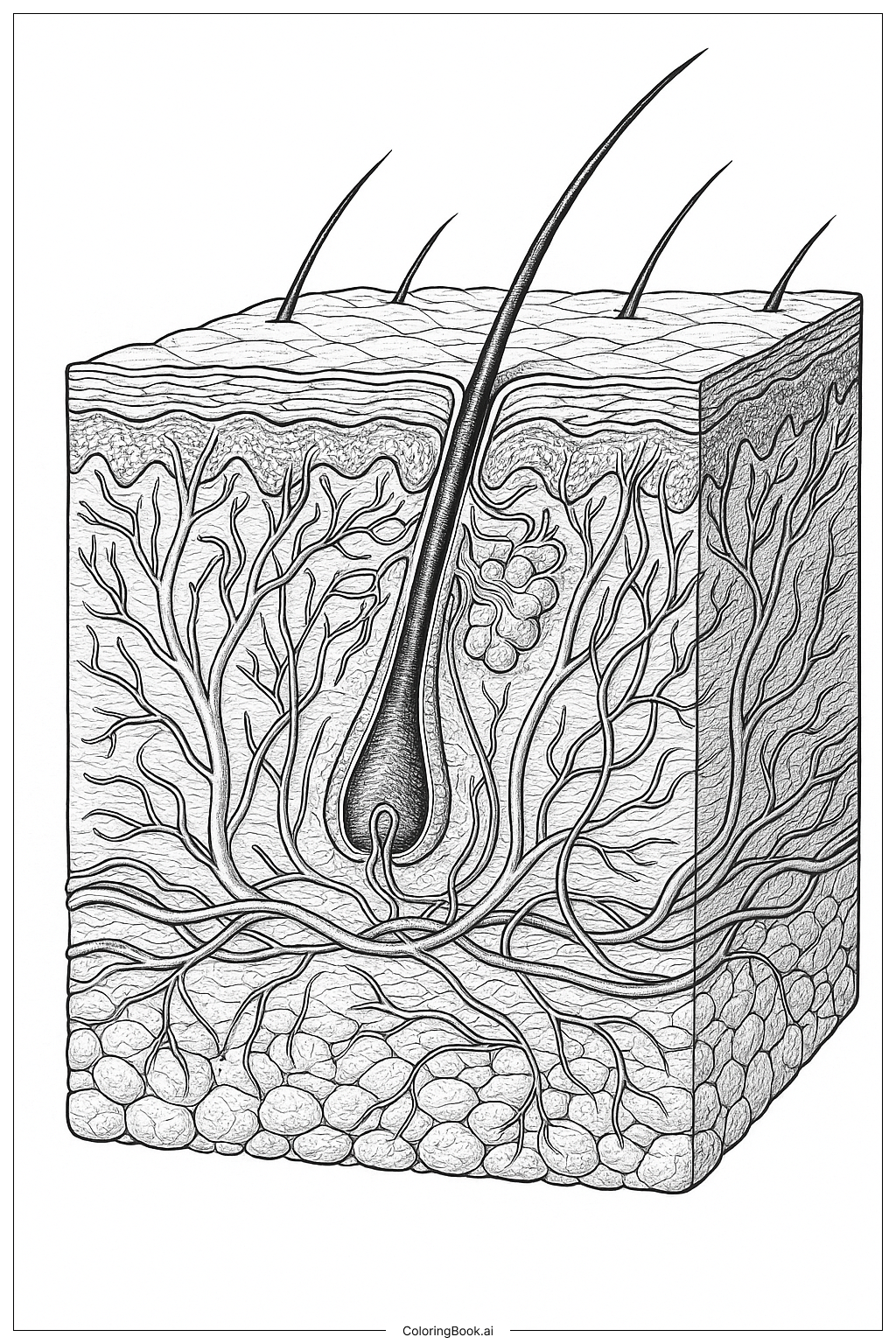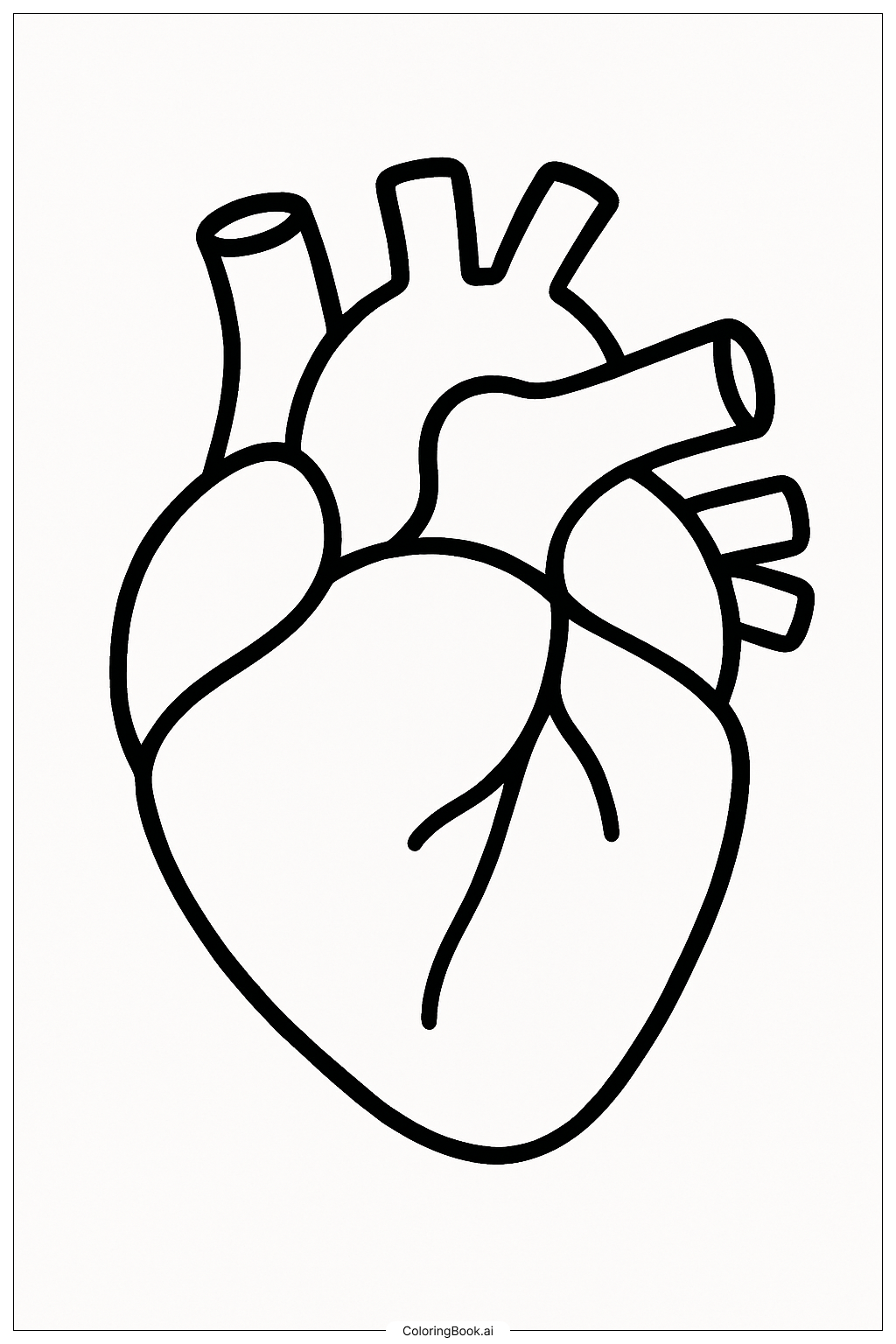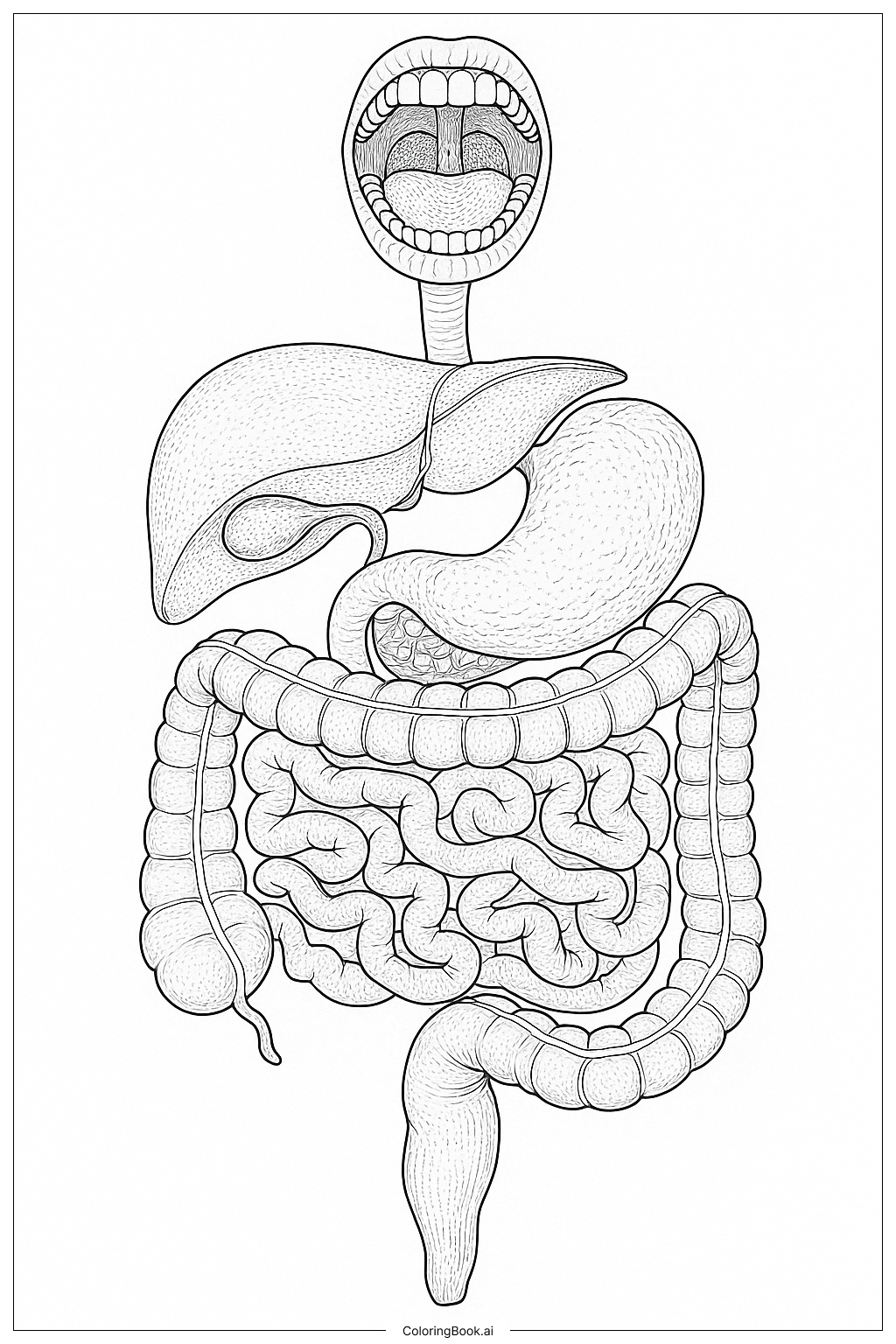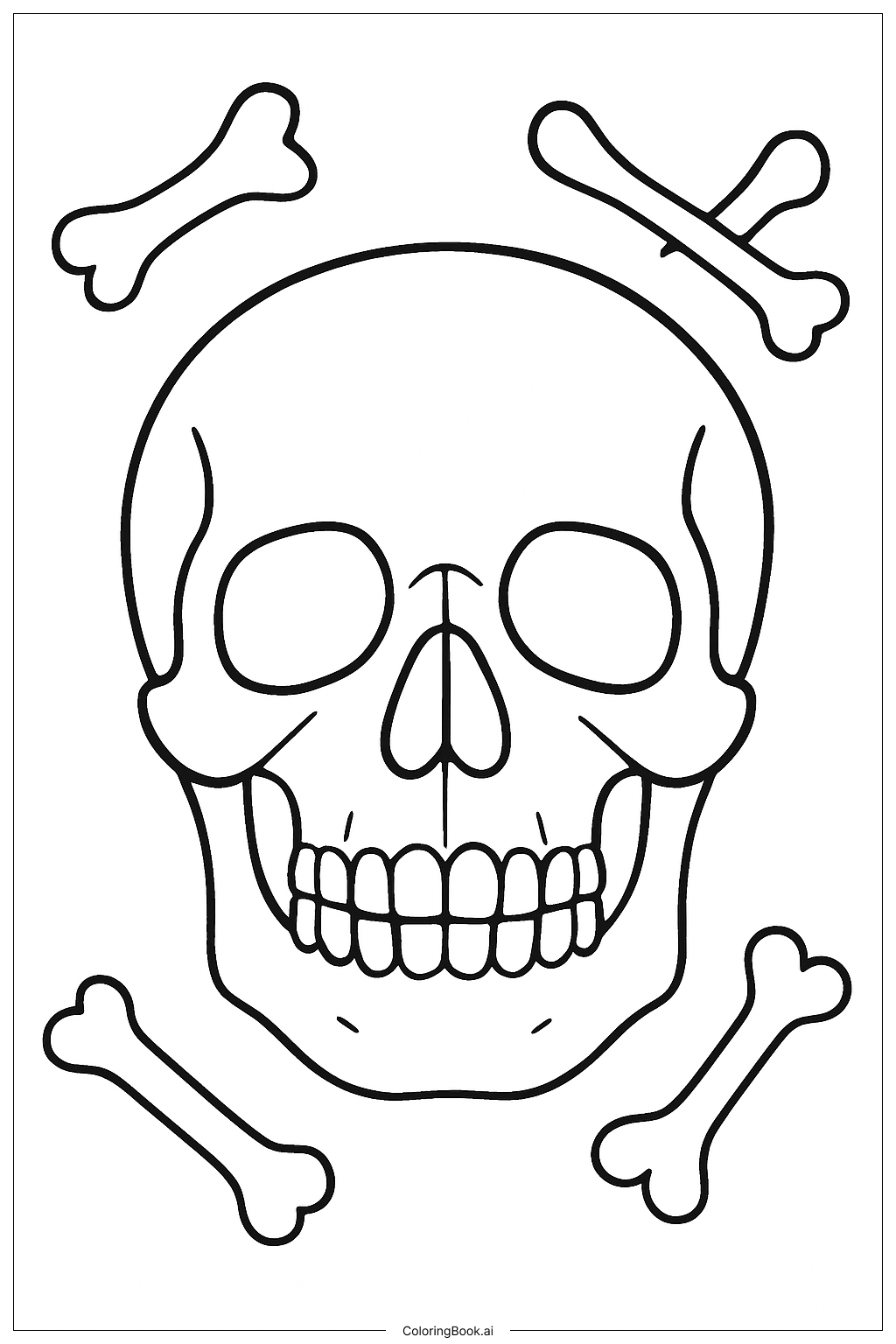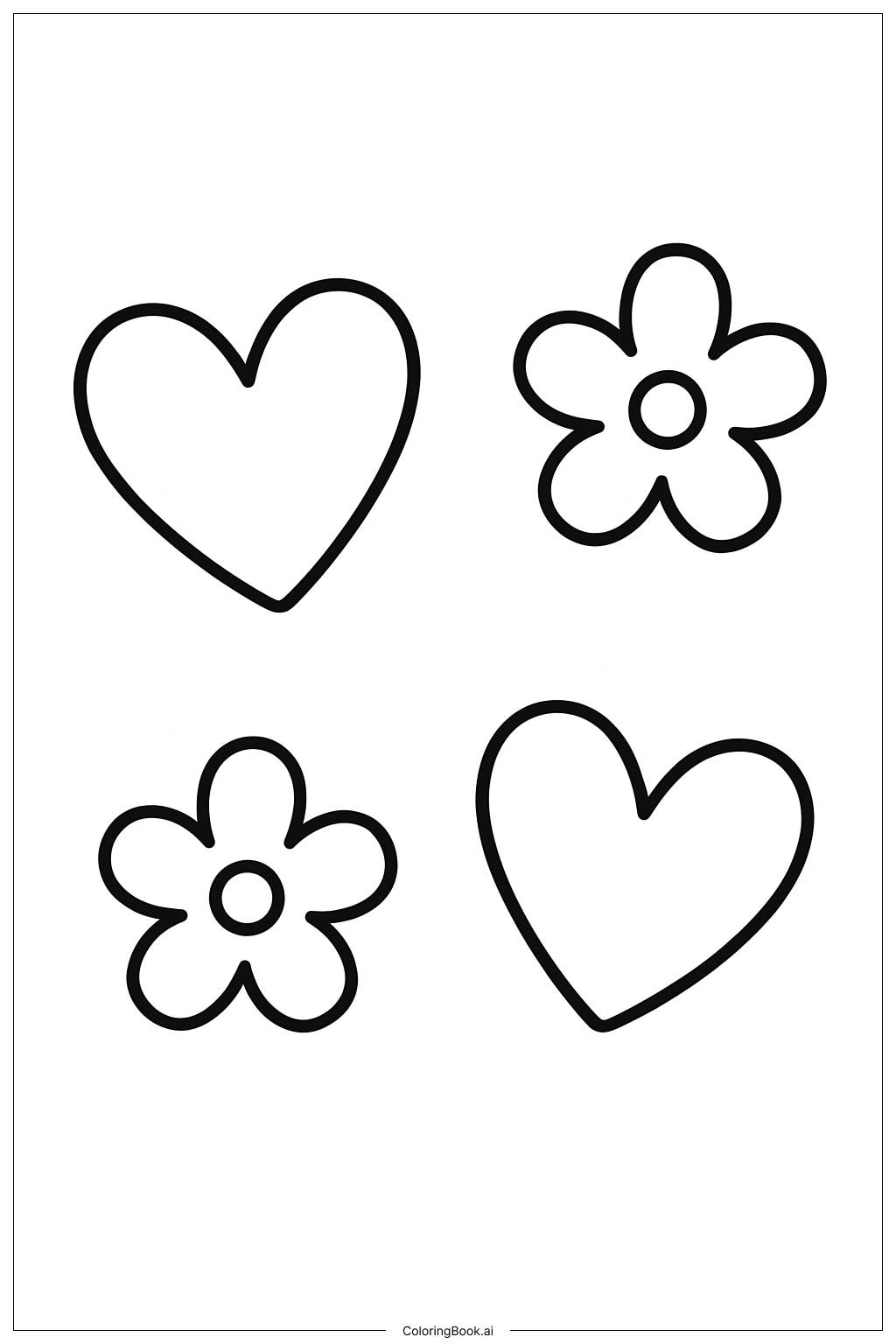Coloring tips: How to color Layers Of The Skin Anatomy coloring page well?
Use light colors for the top skin layers to show they are thin and soft. Choose warm colors like pink or light brown for the middle layers with blood vessels and nerves. Darker colors like red or purple can be used for the tiny branches to make them stand out. Use yellow or light orange for the fat tissue at the bottom to show its softness. The hair can be colored in shades of black, brown, or blonde. Try to color smoothly within the small lines to make the details clear. Use different shades to show depth and layers clearly.
Coloring challenges: Which parts are difficult to color and need attention for Layers Of The Skin Anatomy coloring page?
1. The many tiny branches and lines for blood vessels and nerves can be hard to color inside without going over the edges. 2. The small round shapes in the fat tissue need careful coloring to keep them separate and clear. 3. Coloring the hair follicle is tricky because it is long and narrow, needing smooth shading. 4. Showing the different layers with different colors needs attention to detail to keep the layers clear and not mixed. 5. Coloring smoothly inside the thin top skin layers can be challenging because of the fine line details.
Benefits of coloring books: Advantages of drawing Layers Of The Skin Anatomy coloring page
Coloring this skin anatomy page helps kids learn about the body's largest organ, the skin, by making them see its different parts. It improves their fine motor skills because they need to color small spaces carefully. The activity encourages focus and patience as they work on detailed parts. It also helps kids understand how our skin protects us and keeps us healthy. Coloring science-related pictures makes learning fun and memorable.
